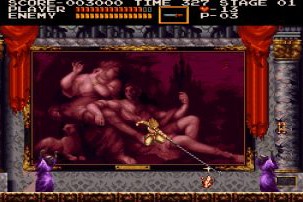Japan has long been viewed by the West as a console-centric country, ever since Nintendo and the NES. But there is another, mostly forgotten world of Japanese gaming history, in which thousands of games were developed for various Japanese computers over an 18 year period that stretches from the late 1970s to the mid-1990s. For all that Nintendo started, it was the open hardware of NEC and other companies that allowed small groups to form and become giants. In fact, some of Japan's most recognizable franchises, such as Metal Gear and Ys, actually began as computer games. The early Japanese computing scene was an intense flurry of creativity that launched the careers of many prominent figures in the video game industry, while also establishing some of the most famous video game companies, such as Square, Enix, Falcom, and Koei.
Japanese computer games were also exempt from any of the licensing and content restrictions that all console makers have imposed in various forms. These early games give us a rare glimpse into a world of Japanese creativity unfettered by censorship and outside pressures, which has never since been replicated. The content ranges from rampant drug use and presidential assassination (XZR), to tender explorations of love, sex, and relationships (Dokyusei), to mature and suspenseful horror (Onryo Senki), and even to one of the first rape simulators (177), predating the infamous RapeLay by 20 years. The content is not always tasteful, but the lawless atmosphere resulted in some of the most unique titles in video game history....
A forgotten era
The personal computer industry in Japan began much like everywhere else: as a response to Intel's creation of the world's first microprocessor, the 4004, in 1971. Both NEC and Toshiba successfully developed their own microprocessors in 1973, and over the next few years a number of personal computer kits and homebew packages were released by companies such as Hitachi, Fujitsu, NEC, Toshiba, and Sharp. Much like in the West, these early computers were primarily for electronics tinkerers and enthusiasts, and had to be programmed by the users themselves.
The early 80s saw the release of the first fully-fledged 8-bit computers designed with average users in mind, rather than amateur programmers (although there were still plenty of those). Three companies eventually shared the 8-bit crown: NEC, with its PC-8800 series; Fujitsu, with the popular FM-7; and Sharp, with the X1. NEC would later come to dominate the Japanese computing scene for over 10 years with another computer, the 16-bit PC-9801, but Fujitsu and Sharp were able to maintain a small but loyal following by staying competitive and eventually releasing two incredible 16-bit machines of their own: the Fujitsu FM Towns, and the Sharp X68000.
One important thing to note is that much like the early computers produced by Western companies such as Apple, Commodore, Atari, and IBM, almost all Japanese computers were incompatible with each other. This led to intense competition among the computer makers, with each vying to establish its own architecture as the dominant standard. Once NEC, Fujitsu, and Sharp took the majority of the market, the remaining computer makers banded together around the MSX, a shared computing standard developed by Microsoft Japan and ASCII. Despite being fourth place in the Japanese computer race, the MSX and its successor eventually achieved popularity in South America and Europe, while the Big Three never found success outside of Japan.
Sunday, June 19, 2016
Forgotten Japan
Hardcore Gaming 101 has a very cool summary of retro Japanese computer gaming:
Labels:
History
Subscribe to:
Post Comments (Atom)


No comments:
Post a Comment